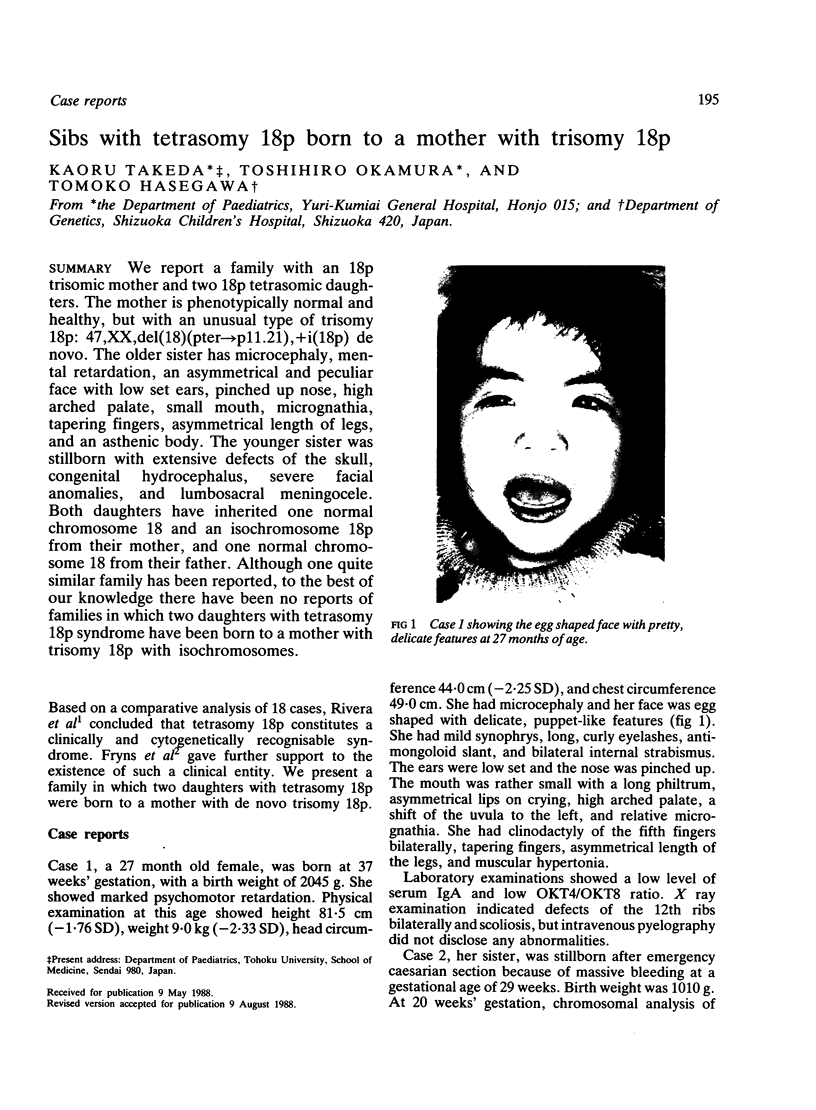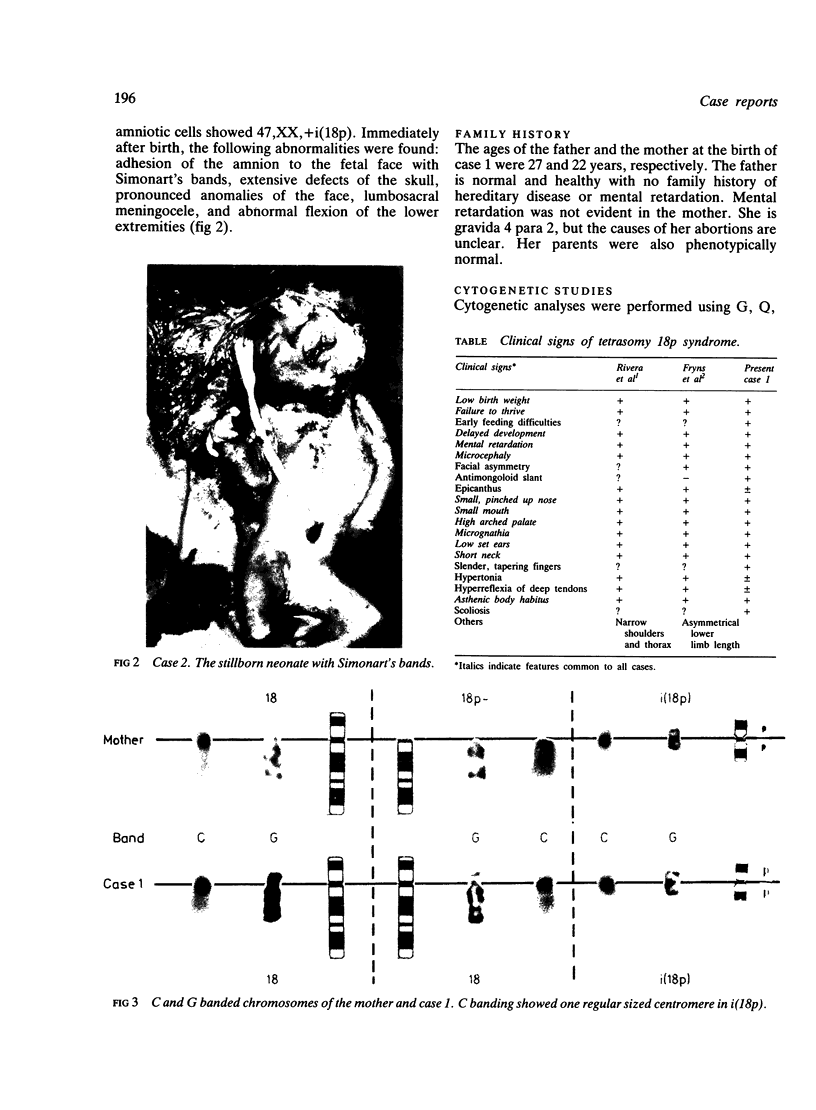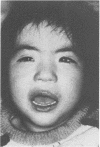Abstract
We report a family with an 18p trisomic mother and two 18p tetrasomic daughters. The mother is phenotypically normal and healthy, but with an unusual type of trisomy 18p: 47,XX,del(18)(pter----p11.21),+i(18p) de novo. The older sister has microcephaly, mental retardation, an asymmetrical and peculiar face with low set ears, pinched up nose, high arched palate, small mouth, micrognathia, tapering fingers, asymmetrical length of legs, and an asthenic body. The younger sister was stillborn with extensive defects of the skull, congenital hydrocephalus, severe facial anomalies, and lumbosacral meningocele. Both daughters have inherited one normal chromosome 18 and an isochromosome 18p from their mother, and one normal chromosome 18 from their father. Although one quite similar family has been reported, to the best of our knowledge there have been no reports of families in which two daughters with tetrasomy 18p syndrome have been born to a mother with trisomy 18p with isochromosomes.
Full text
PDF


Images in this article
Selected References
These references are in PubMed. This may not be the complete list of references from this article.
- Fryns J. P., Kleczkowska A., Marien P., Van den Berghe H. 18p tetrasomy. Further evidence for a distinctive clinical syndrome. Ann Genet. 1985;28(2):111–112. [PubMed] [Google Scholar]
- Nielsen J., Nordland E. Length of Y chromosome and activity in boys. Clin Genet. 1975 Oct;8(4):291–296. doi: 10.1111/j.1399-0004.1975.tb01504.x. [DOI] [PubMed] [Google Scholar]
- Rivera H., Möller M., Hernández A., Enríquez-Guerra M. A., Arreola R., Cantú J. M. Tetrasomy 18p: a distinctive syndrome. Ann Genet. 1984;27(3):187–189. [PubMed] [Google Scholar]
- Schmutz S. M., Pinno E. Morphology alone does not make an isochromosome. Hum Genet. 1986 Mar;72(3):253–255. doi: 10.1007/BF00291889. [DOI] [PubMed] [Google Scholar]
- de la Chapelle A. How do human isochromosomes arise? Cancer Genet Cytogenet. 1982 Feb;5(2):173–179. doi: 10.1016/0165-4608(82)90007-3. [DOI] [PubMed] [Google Scholar]





